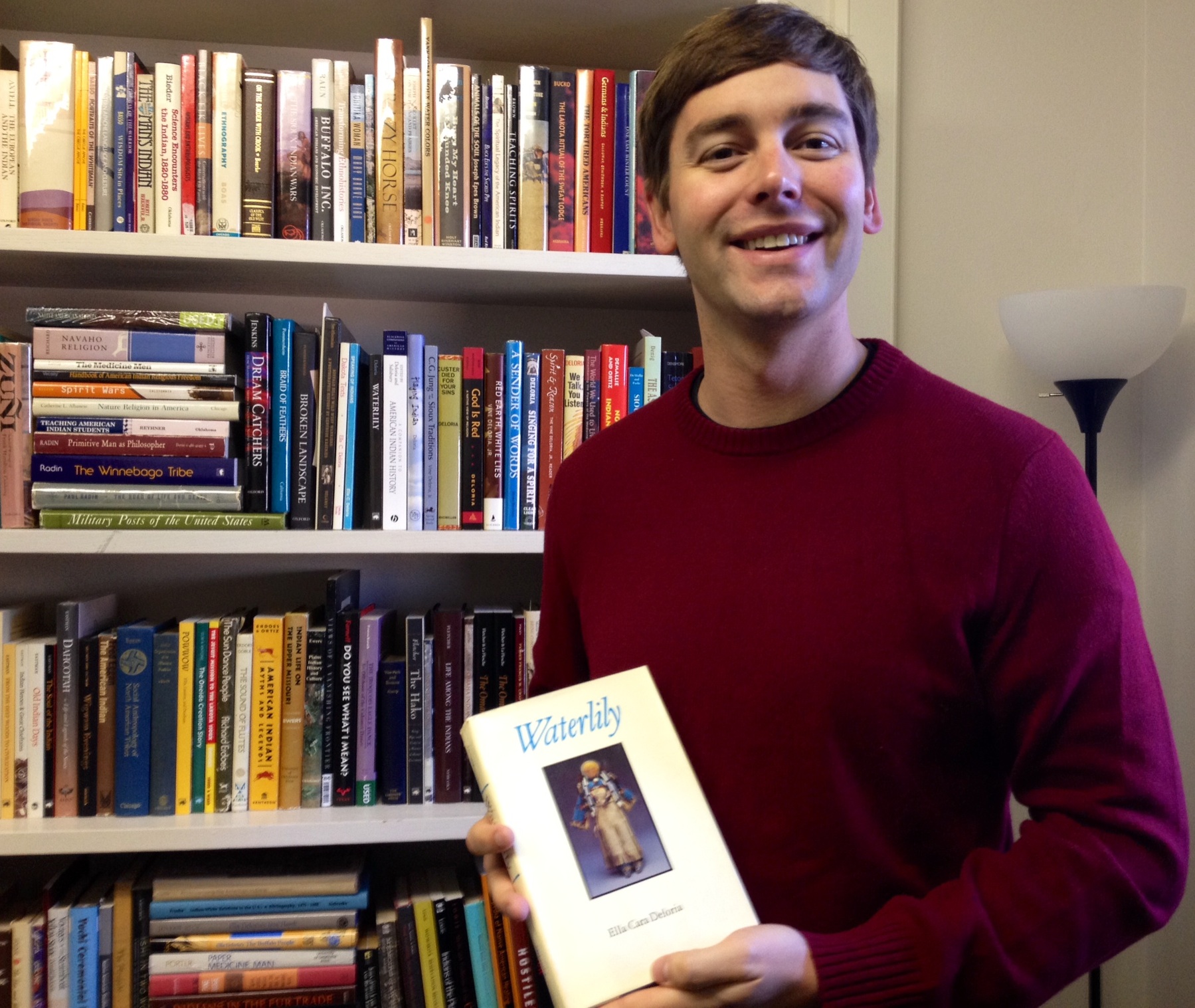
Native Studies faculty attempt to revamp program into ‘regional powerhouse’
New Native Studies faculty are describing the revamped curriculum as a kind of “choose your own adventure.”
Dave Posthumus, assistant professor of anthropology, is one of two new additions to Native Studies, and said he came to the University of South Dakota to bring continuity and interdisciplinary collaboration to the program.
“We need to have a presence on campus, because for a while, students weren’t sure what was happening in Native Studies,” he said. “Quite frankly, they weren’t getting what they were promised.”
Posthumus and Elise Boxer, assistant history professor and enrolled member of the Fort Peck Assiniboine and Sioux Tribes, said they are both working to make USD’s program a regional, and possibly national, powerhouse in the discipline.
Boxer said a significant change to the curriculum will be altering the two specializations in the Native Studies major to Lakota studies and tribal preservation, which focuses on oral history and museum studies.
“What’s neat about the University of South Dakota being a smaller university is that we have to rely on other people across campus and various departments to bring a group of people together for Native American issues,” she said. “We’re a small program, but we have a vibrant curriculum — which is more on point with national trends.”
A notable change to be made by the new faculty to reflect other programs in the U.S. is to change its name to Native American and Indigenous Studies. Boxer was the first one to suggest the change, and she said from a national standpoint, the new name would reflect a more inclusive program which includes the study of all indigenous people in North America.
As the Native Studies faculty lay out new plans to reinvigorate the program, they are dealing with low enrollment numbers. There are only four Native Studies majors and eight minors, said Kurt Hackemer, chair of USD’s history department and acting coordinator of the Native Studies program.
Since its start in 2006, Native Studies has had a rocky history — bouncing from chairperson to chairperson, significant enrollment issues and lack of faculty.
The departure of its lone faculty member Elizabeth Castle last year initiated a shift where Native Studies was downgraded from department to an interdisciplinary program. Hackemer said this influenced how the College of Arts and Sciences advertised the two open faculty positions, which resulted in more people applying for the jobs than in past years.
The impact on the program, Hackemer said, means building a more appealing major.
“They’re creating a curriculum that is broader in terms of its scope,” he said. “Being two young faculty members, they are so committed to outreach with students and faculty beyond the major.”
South Dakota State University’s American Indian Studies is also an emerging program under Richard Meyers, its program coordinator, but Boxer said the two universities are more collaborative than competitive.
It’s about making USD’s program distinct, Boxer said. And one of the elements to distinguish USD is its language courses. Armik Mirzayan, assistant professor of languages, linguistics and philosophy, teaches Lakota and American Indian languages at USD, and Boxer said this is important because Lakota culture and language are intricately related.
The resources available through the Oral History Center and W.H.Over Museum are also distinct aspects at USD that set the program apart. Development of research in these areas might eventually include working with tribal colleges in the state, Posthumus said.
More student engagement is a significant focus for the Native Studies faculty, and students such as senior Tyler Tordsen are already noticing a difference. Tordsen, Student Government Association president, was a Native Studies minor for two years. He said in that time, it was apparent the program seemed to be struggling, even though it had the blessing of the university.
Tordsen said he met the new faculty at a welcome back, encouragement dinner for American Indian students and admired the passion and enthusiasm of Boxer and Posthumus to reinvent the program.
“It is to the point where USD deserves to have a really, really strong Native Studies program,” he said.
Sophomore Anissa Martin, a resident of the Rosebud reservation, is minoring in Native Studies. Martin said she is hearing more positive comments about the Native Studies program from fellow students and is excited for the future of the discipline at USD.
“The class I am in now for my minor, it’s so motivating — I’m honestly thinking about majoring in Native Studies,” she said.
Some students who have been involved with the program for a few years are worried about the “Frankenstein model” that would include the Native Studies program being supported by numerous departments. Senior Jordan Catlett is a Native Studies minor and said she is excited about the new faculty but believes USD administration is making changes not for students, but to compete with SDSU’s program.
Catlett is still not sure if she will be able to graduate with a Native Studies minor in the spring because of the number of required courses that were never taught during her time in the program. While her degree is in limbo, Catlett said she hopes that one day Native Studies will become its own department again.
“In a way, we are regressing,” she said. “But I hope these faculty members will be able to replenish it and build it back up.”
(Photo: David Posthumus, assistant professor of anthropology, shows off one of his favorite books about American Indians, Waterlily, in his office in East Hall. He is one of two new additions to reinvent USD’s Native Studies program. Megan Card / The Volante)


